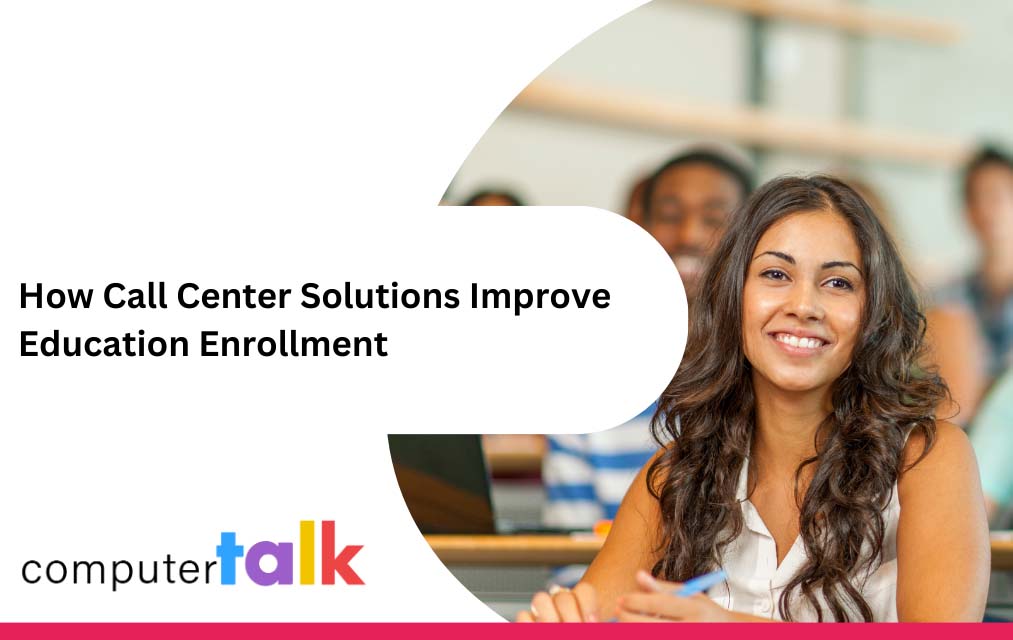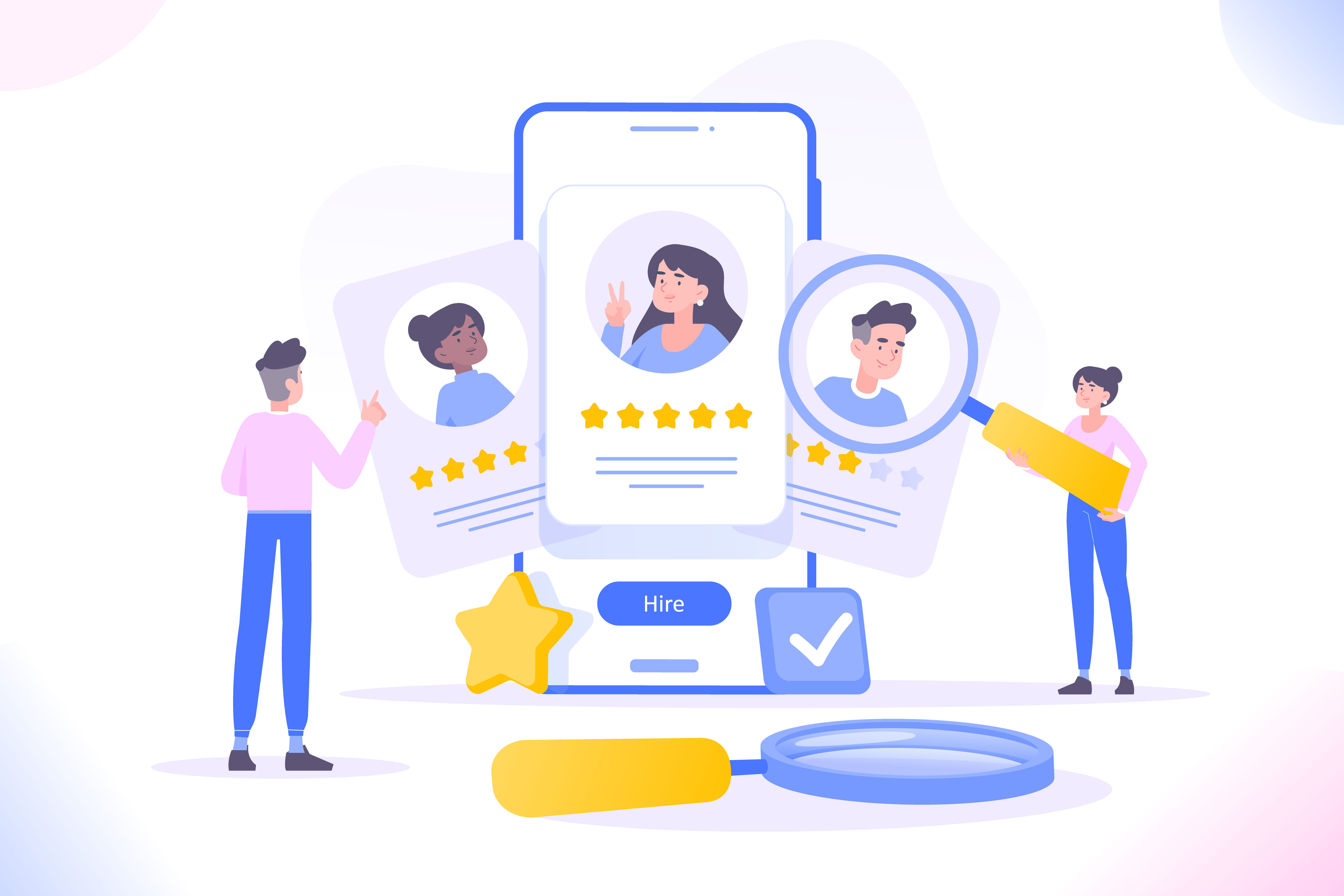How Call Center Solutions Improve Education Enrollment
by Nicole Robinson | Published On April 11, 2024 | Last Updated April 11, 2024

Discover how call center solutions revolutionize student engagement and enrollment in education.
Advanced call center technologies and systems are pivotal in modernizing communication between educational institutions and their students, making interactions more efficient, personalized, and responsive. The call center space is expected to grow at a rate of 6.6% over the next five years, reaching a market size of $496 billion by 2027, emphasizing the increasing importance of call center technologies. With this growth, the adoption of call center technologies in the education sector can lead to enhanced student interaction, enrollment processes, and satisfaction.
We’ll be exploring several tools that can be implemented to improve the education experience for both existing and incoming students, and staff.
Optimizing Appointment Scheduling in Education

Call center solutions in education revolutionize communication between students and educational personnel. These solutions employ enrollment management technology, which allows efficient handling of enrollment inquiries, guidance through the registration steps, and immediate resolution of any issues, ensuring a smoother enrollment experience for students.
Call center solutions enhance the coordination of appointments with guidance officers, tour coordinators, and advisors by employing advanced scheduling software integrated with the institution's communication system. Such software allows for real-time viewing of available slots and enables instant booking of appointments through a user-friendly interface, accessible via phone or online platforms. The system also automates the process of appointment confirmation and reminders, ensuring both students and staff are well-informed of upcoming meetings.
This process improves counseling sessions by ensuring that students can easily schedule and reschedule appointments, allowing for more consistent and personalized support from counselors. The centralization of helpdesk support streamlines the resolution of academic inquiries, providing a single point of contact for students, which makes the support process more efficient and less fragmented.
Additionally, it facilitates effective communication during emergencies, such as natural disasters, campus security incidents, or health crises, by enabling rapid dissemination of information and instructions to students. This ensures that students receive timely and accurate information, which is crucial for their safety, and minimizes disruptions to their academic progress by quickly addressing concerns and providing guidance on the continuation of studies during or after such emergencies.
Streamlining Student Services Communication
Clear and effective communication is paramount in providing essential student services such as parking permits, understanding tuition costs, and campus directions. By utilizing call centers, institutions streamline appointment booking, offering students and staff a seamless experience. This allows for real-time calendar updates and reminders, minimizing scheduling conflicts and wait times.
Educational institutions can significantly improve information dissemination to students by leveraging multi-channel support, such as phone, email, chat, and social media. An omnichannel approach ensures comprehensive coverage, allowing every student query to find an appropriate channel for a response. By integrating advanced call routing and automated response systems, universities can manage inquiries more efficiently, offering quick and tailored communication to students.
Boosting Enrollment and Student Happiness

Call center solutions play a pivotal role in transforming the way educational institutions engage with both prospective and current students. By leveraging inbound and outbound communication strategies effectively, these solutions empower educational institutions to create a more engaging and supportive environment for students.
Inbound Communication Strategies
- Real-time Responses: Utilizing contact center solutions to provide immediate answers to digital inquiries through social media, online forms, and live chat enhances accessibility and responsiveness, making prospective students feel valued from the very beginning.
- Efficient Email Management: Automated forwarding of general inquiries to the appropriate departments ensures that every question is answered timely and accurately, thereby improving the overall experience for prospective students.
- Appointment Scheduling: Contact center technology enables appointment scheduling through online platforms and automated phone systems, allowing students to easily book meetings with guidance officers, tour coordinators, and financial aid advisors at their convenience.
- Comprehensive Student Services Communication: Offering clear information on essential services like campus directions, parking, and understanding tuition costs can help make orientation much easier for students.
Outbound Communication Strategies
- Follow-up Engagement: Making follow-up calls to potential students reinforces the institution's commitment to supporting them through the registration process, improving conversion rates.
- Re-engaging Aged Leads: Actively reaching out to individuals who showed initial interest or abandoned the enrollment process can revive interest and increase enrollments.
- Program Awareness Campaigns: Informing potential students about specific programs and initiatives, such as health plans and credit campaigns, raises awareness and attracts enrollments based on aligned interests.
- Alumni Relations: Strengthening ties with alumni through regular updates and engagement initiatives can boost fundraising efforts and create a network of support for current students.
Automating Educational Administration for Better Engagement
Integrating AI in educational administration through call centers automates routine tasks and optimizes student interactions through various advanced features:
- Predictive Call Routing: This technology enhances the efficiency of query resolution by directing calls to the most appropriate agent based on the analysis of caller data. 50% of service representatives report that AI tools like predictive call routing enhance engagement.
- Interactive Voice Response (IVR): IVR systems automate responses to frequently asked questions, streamlining administrative processes. A notable implementation reduced the cost of running the system by two-thirds while allowing callers to complete initial inquiries in less than two minutes.
- Conversational AI: Chatbots provide real-time, 24/7 responses to student inquiries, handling large volumes of interactions efficiently. Chatbots offer speed and accuracy, which underscores their potential to significantly boost student satisfaction.
- Emotional Intelligence AI: Emotional AI evaluates the emotional tone of callers, facilitating more empathetic interactions. AI that analyzes the sentiment of conversations can lead to better engagement, highlighting its effectiveness in understanding and responding to caller emotions.
Call center solutions in education are revolutionizing how institutions interact with students, enhancing both engagement and enrollment. To remain at the forefront of educational innovation, embracing these technologies is key to improving communication and support services.
Discover how call center solutions can transform an institution's student engagement and enrollment process and begin revolutionizing your approach today.
More from our blog
 Buying or replacing a contact center platform is one of the toughest technology decisions a service team will ever face. The system touches every interaction - from the IVR menu a frustrated customer hears to the reporting dashboards managers use...
Buying or replacing a contact center platform is one of the toughest technology decisions a service team will ever face. The system touches every interaction - from the IVR menu a frustrated customer hears to the reporting dashboards managers use...
 Congratulations! You nailed the interview, got the job, and your first day as a call center agent is right around the corner.
Congratulations! You nailed the interview, got the job, and your first day as a call center agent is right around the corner.
 It’s Valentine’s Day, and love is in the air! While you’re thinking about ways to make your loved ones feel special, don’t forget the importance of making your customers feel special too. Businesses can’t exist without customers to support them,...
It’s Valentine’s Day, and love is in the air! While you’re thinking about ways to make your loved ones feel special, don’t forget the importance of making your customers feel special too. Businesses can’t exist without customers to support them,...

